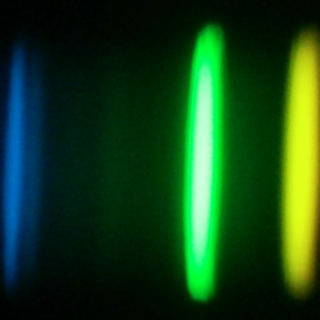Bibcode
Bandyopadhyay, Avrajit; Ezzeddine, Rana; Allende Prieto, Carlos; Aria, Nima; Shah, Shivani P.; Beers, Timothy C.; Frebel, Anna; Hansen, Terese T.; Holmbeck, Erika M.; Placco, Vinicius M.; Roederer, Ian U.; Sakari, Charli M.
Referencia bibliográfica
The Astrophysical Journal Supplement Series
Fecha de publicación:
10
2024
Número de citas
16
Número de citas referidas
10
Descripción
Understanding the abundance pattern of metal-poor stars and the production of heavy elements through various nucleosynthesis processes offers crucial insights into the chemical evolution of the Milky Way, revealing primary sites and major sources of rapid neutron-capture process (r-process) material in the Universe. In this fifth data release from the R-Process Alliance (RPA), we present the detailed chemical abundances of 41 faint (down to V = 15.8) and extremely metal-poor (down to [Fe/H] = ‑3.3) halo stars selected from the RPA. We obtained high-resolution spectra for these objects with the HORuS spectrograph on the Gran Telescopio Canarias. We measure the abundances of light, α, Fe-peak, and neutron-capture elements. We report the discovery of five carbon-enhanced metal-poor, one limited-r, three r-I, and four r-II stars, and six Mg-poor stars. We also identify one star of a possible globular cluster origin at an extremely low metallicity at [Fe/H] = ‑3.0. This adds to the growing evidence of a lower-limit metallicity floor for globular cluster abundances. We use the abundances of Fe-peak elements and the α-elements to investigate the contributions from different nucleosynthesis channels in the progenitor supernovae. We find the distribution of [Mg/Eu] as a function of [Fe/H] to have different enrichment levels, indicating different possible pathways and sites of their production. We also reveal differences in the trends of the neutron-capture element abundances of Sr, Ba, and Eu of various r-I and r-II stars from the RPA data releases, which provide constraints on their nucleosynthesis sites and subsequent evolution. * This paper includes data gathered with the 10.4 m Gran Telescopio Canarias located at La Palma, Canary Islands, Spain.
Proyectos relacionados

Abundancias Químicas en Estrellas
La espectroscopía de estrellas nos permite determinar las propiedades y composiciones químicas de las mismas. A partir de esta información para estrellas de diferente edad en la Vía Láctea es posible reconstruir la evolución química de la Galaxia, así como el origen de los elementos más pesados que el boro, forjados principalmente en los interiores
Carlos
Allende Prieto